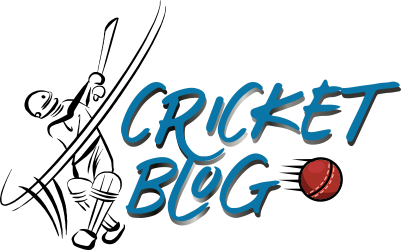Overview
Bowling is one of the two fundamental aspects of cricket, alongside batting. A skilled bowler can turn the course of a match by taking key wickets, applying pressure through tight lines, or disrupting the rhythm of even the most experienced batters. Over the years, cricket has witnessed numerous legendary bowlers whose impact transcends generations, influencing the evolution of the sport itself.
This article presents a curated list of the top 10 bowlers in cricket history, recognizing their skill, impact, and legacy across formats and eras.
Criteria for Ranking
The bowlers featured in this list have been ranked based on a combination of the following factors:
- Career longevity and consistency
- Total wickets taken across formats (Tests, ODIs, T20Is)
- Impact in key matches and tournaments
- Bowling average, economy, and strike rate
- Records held and individual accolades
- Influence on the game and legacy
The list includes bowlers from various eras to provide a balanced historical perspective.
Top 10 Bowlers of All Time
1. Muttiah Muralitharan (Sri Lanka)
- Career Span: 1992–2011
- Bowling Style: Right-arm off-spin
- Total Wickets: 800 (Tests), 534 (ODIs), 13 (T20Is)
- Major Achievements:
- Most wickets in Test and ODI history
- 67 five-wicket hauls in Tests
- ICC Cricket Hall of Fame inductee
- Why He’s Among the Best:
Muralitharan’s unmatched wicket tally and longevity make him arguably the most successful bowler in cricket history. His variation and consistency, especially in subcontinental conditions, were unparalleled.
2. Shane Warne (Australia)
- Career Span: 1992–2007
- Bowling Style: Right-arm leg-spin
- Total Wickets: 708 (Tests), 293 (ODIs)
- Major Achievements:
- Second-highest wicket-taker in Test cricket
- Key player in Australia’s dominance during the 1990s and early 2000s
- Delivered the “Ball of the Century” in 1993
- Why He’s Among the Best:
Warne revived leg-spin bowling and brought flair and aggression to the art. His control, turn, and mind games set him apart from other spinners.
3. Glenn McGrath (Australia)
- Career Span: 1993–2007
- Bowling Style: Right-arm fast-medium
- Total Wickets: 563 (Tests), 381 (ODIs), 5 (T20Is)
- Major Achievements:
- Most wickets by a fast bowler in World Cups (71)
- Played key roles in Australia’s three consecutive World Cup wins (1999, 2003, 2007)
- Why He’s Among the Best:
McGrath’s precision, seam movement, and tactical intelligence made him one of the most difficult bowlers to face, especially in big matches.
4. Wasim Akram (Pakistan)
- Career Span: 1984–2003
- Bowling Style: Left-arm fast
- Total Wickets: 414 (Tests), 502 (ODIs)
- Major Achievements:
- First bowler to reach 500 ODI wickets
- Master of reverse swing
- Key member of Pakistan’s 1992 World Cup-winning team
- Why He’s Among the Best:
Akram’s ability to swing the ball both ways at high speed made him lethal across conditions. He is often regarded as the greatest left-arm fast bowler in history.
5. Anil Kumble (India)
- Career Span: 1990–2008
- Bowling Style: Right-arm leg-spin
- Total Wickets: 619 (Tests), 337 (ODIs)
- Major Achievements:
- Second-most Test wickets by an Indian
- Took all 10 wickets in a Test innings (vs Pakistan, 1999)
- Why He’s Among the Best:
Kumble’s unique style relied more on pace and bounce than spin, yet he consistently outwitted batters with relentless accuracy and grit.
6. James Anderson (England)
- Career Span: 2003–present
- Bowling Style: Right-arm fast-medium
- Total Wickets: 700+ (Tests), 269 (ODIs), 18 (T20Is) (as of 2025)
- Major Achievements:
- Most Test wickets by a fast bowler
- First English bowler to reach 700 Test wickets
- Why He’s Among the Best:
Anderson’s mastery of swing, especially in English conditions, and his longevity make him a modern legend. He continues to perform well into his 40s.
7. Dennis Lillee (Australia)
- Career Span: 1971–1984
- Bowling Style: Right-arm fast
- Total Wickets: 355 (Tests), 103 (ODIs)
- Major Achievements:
- Dominant fast bowler of the 1970s
- Known for aggression and intimidating pace
- Why He’s Among the Best:
Lillee combined raw pace with tactical acumen, setting the standard for fast bowling in his era. His partnership with Jeff Thomson was feared worldwide.
8. Curtly Ambrose (West Indies)
- Career Span: 1988–2000
- Bowling Style: Right-arm fast
- Total Wickets: 405 (Tests), 225 (ODIs)
- Major Achievements:
- Best known for devastating spells (e.g., 7/1 vs Australia, 1993)
- Maintained one of the best economy rates in Test history
- Why He’s Among the Best:
Ambrose was known for unerring accuracy and bounce. His calm demeanor contrasted sharply with his deadly bowling.
9. Richard Hadlee (New Zealand)
- Career Span: 1973–1990
- Bowling Style: Right-arm fast-medium
- Total Wickets: 431 (Tests), 158 (ODIs)
- Major Achievements:
- First bowler to reach 400 Test wickets
- Knighted for services to cricket
- Why He’s Among the Best:
Hadlee carried the New Zealand bowling attack for over a decade, known for precision, stamina, and effectiveness on all surfaces.
10. Lasith Malinga (Sri Lanka)
- Career Span: 2004–2020
- Bowling Style: Right-arm fast (sling action)
- Total Wickets: 101 (Tests), 338 (ODIs), 107 (T20Is)
- Major Achievements:
- First bowler to take 4 wickets in 4 balls in international cricket
- Leading T20I wicket-taker for years
- Why He’s Among the Best:
Malinga revolutionized death bowling with his unique action and toe-crushing yorkers. A T20 icon, he was also a game-changer in ODIs.
Conclusion
The bowlers featured in this list represent the highest standards of skill, innovation, and resilience in cricket. While styles and formats have changed, their contributions remain timeless. Whether through raw pace, cunning spin, or pinpoint accuracy, these legends have carved their names into cricketing history.
